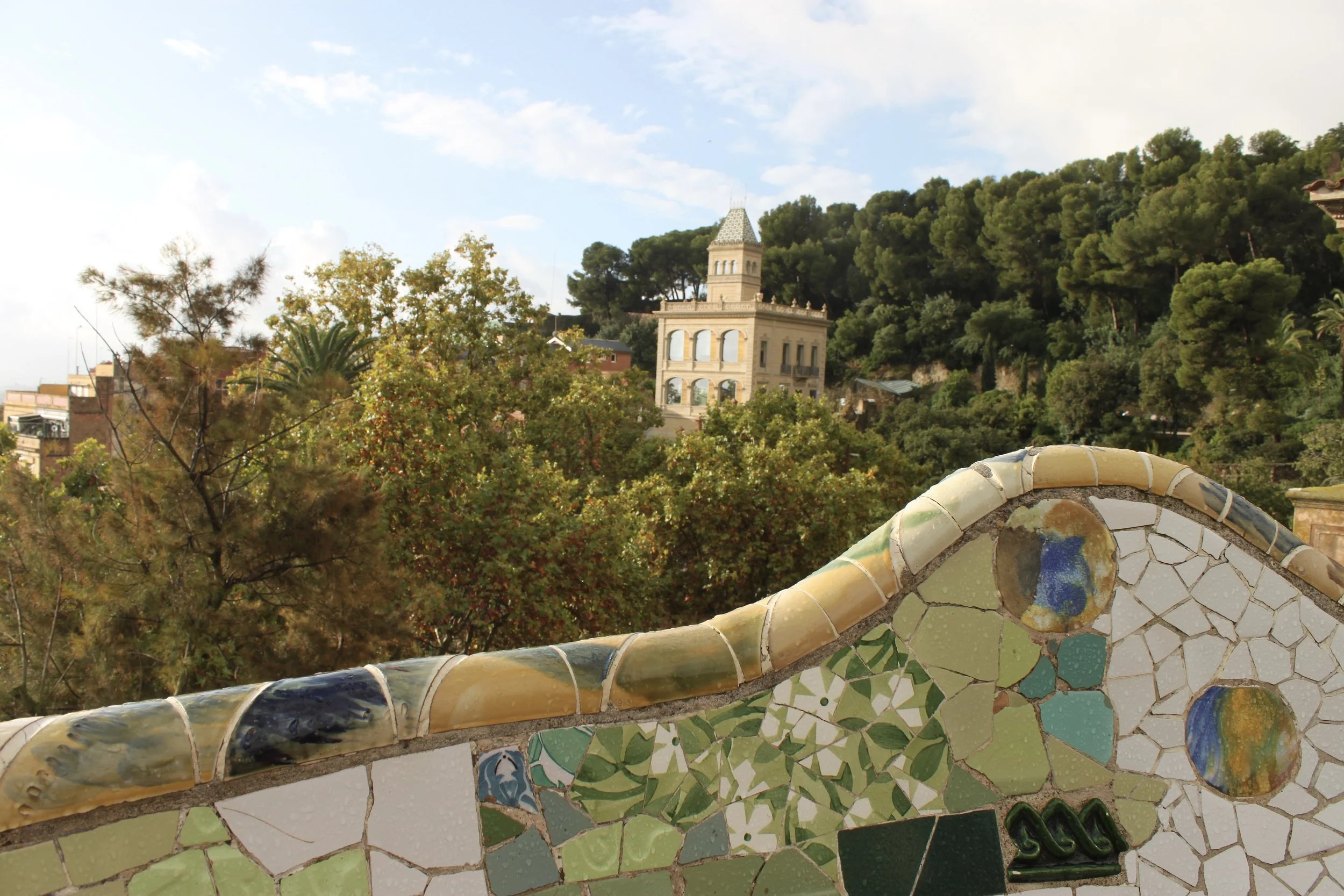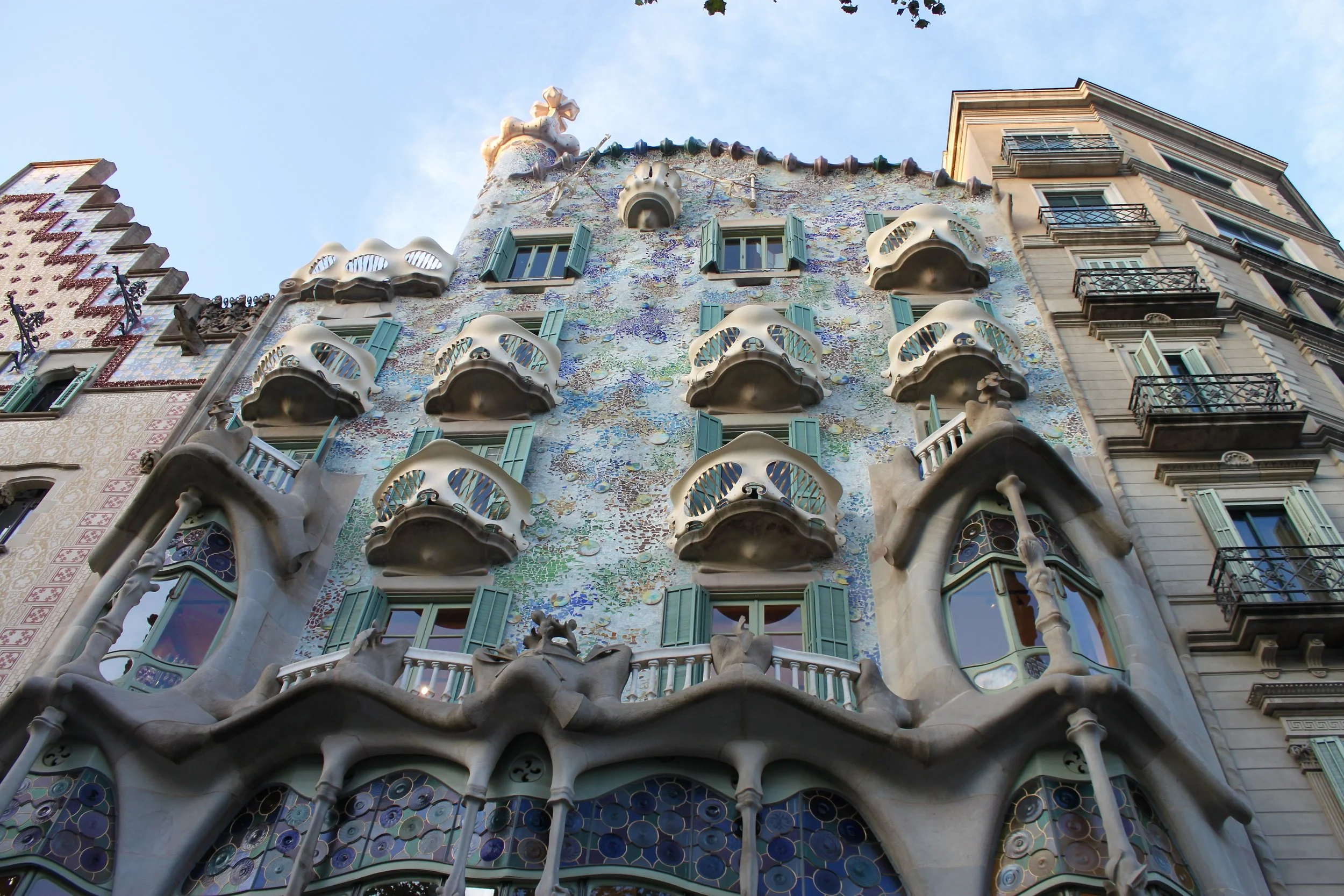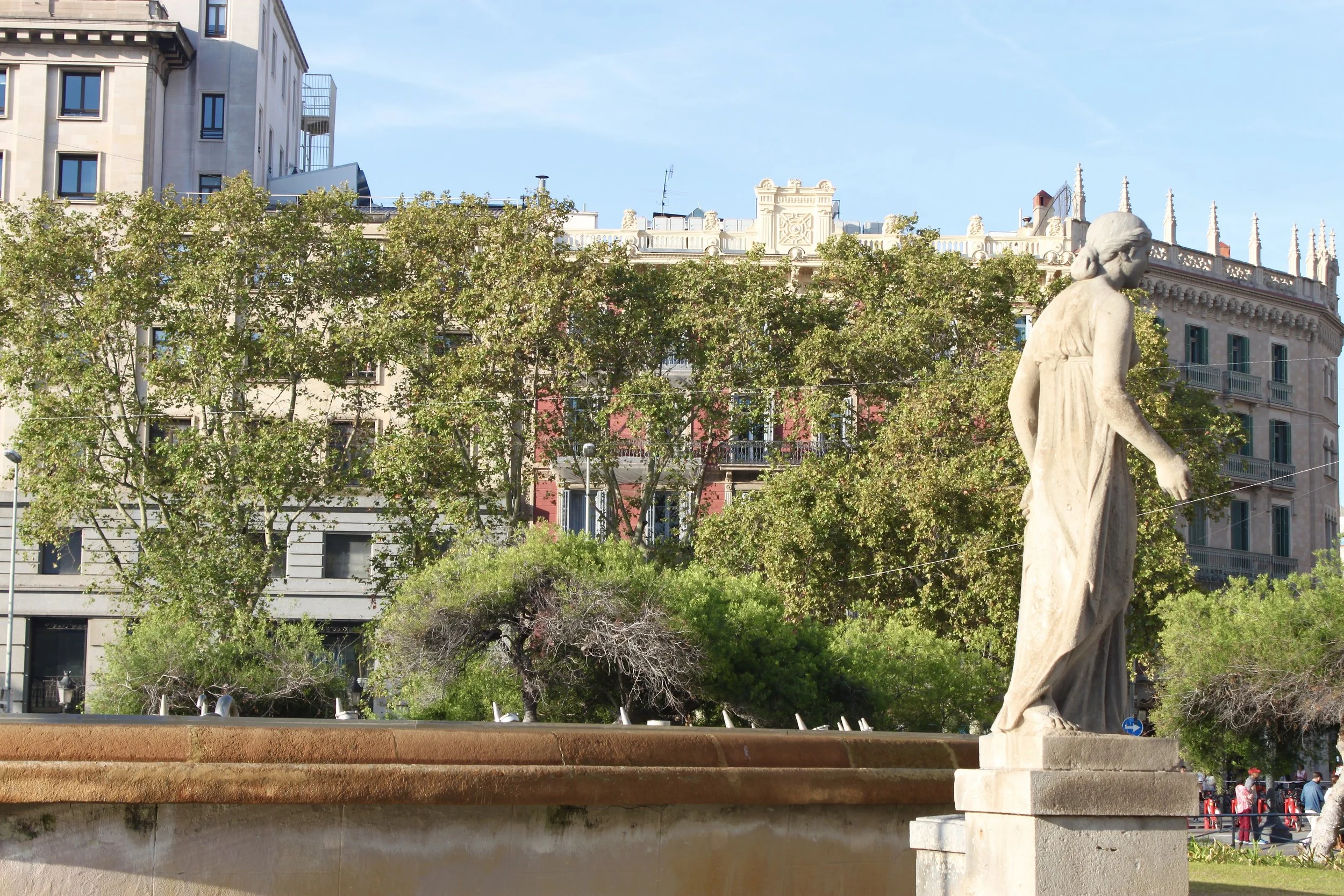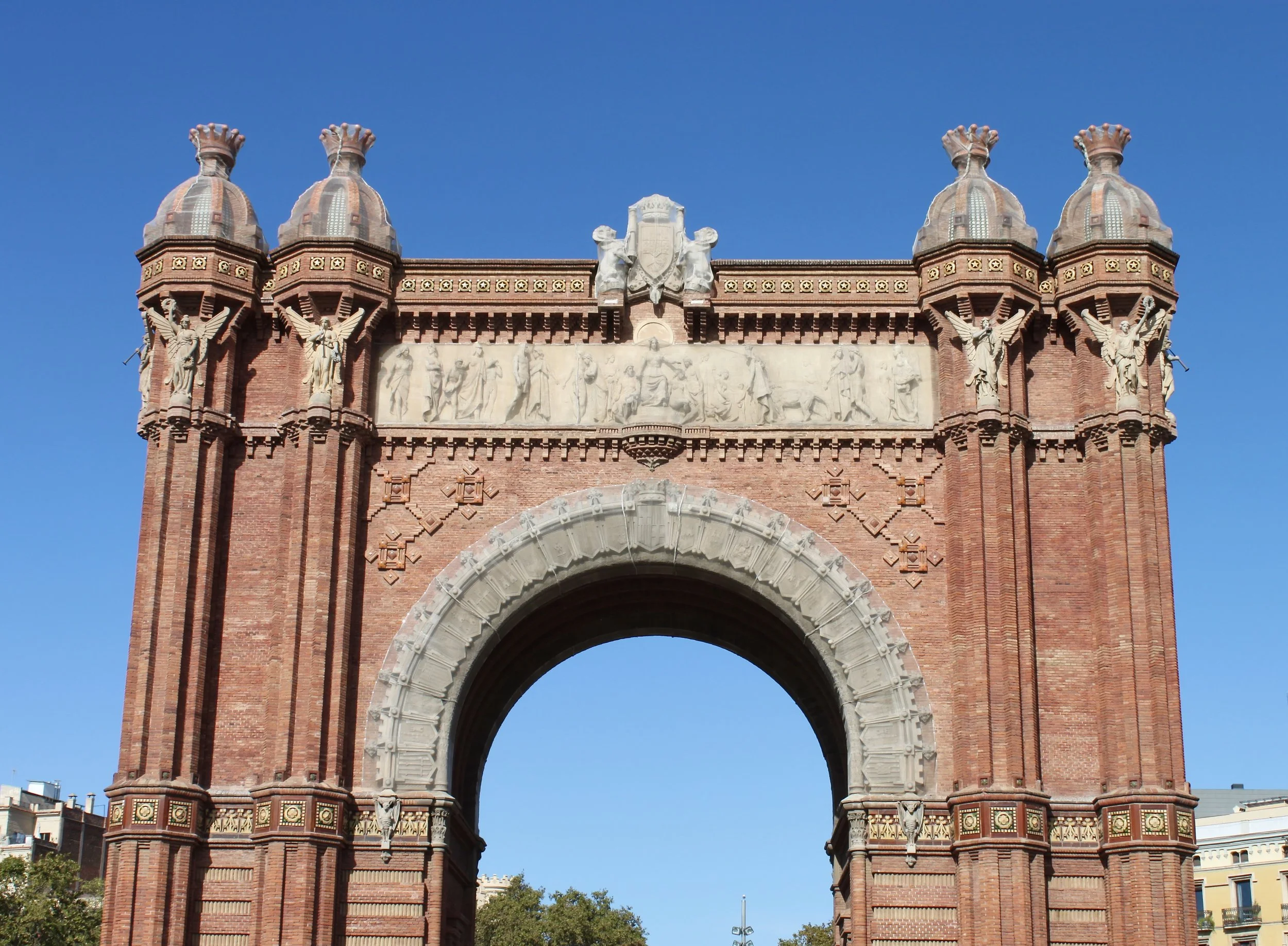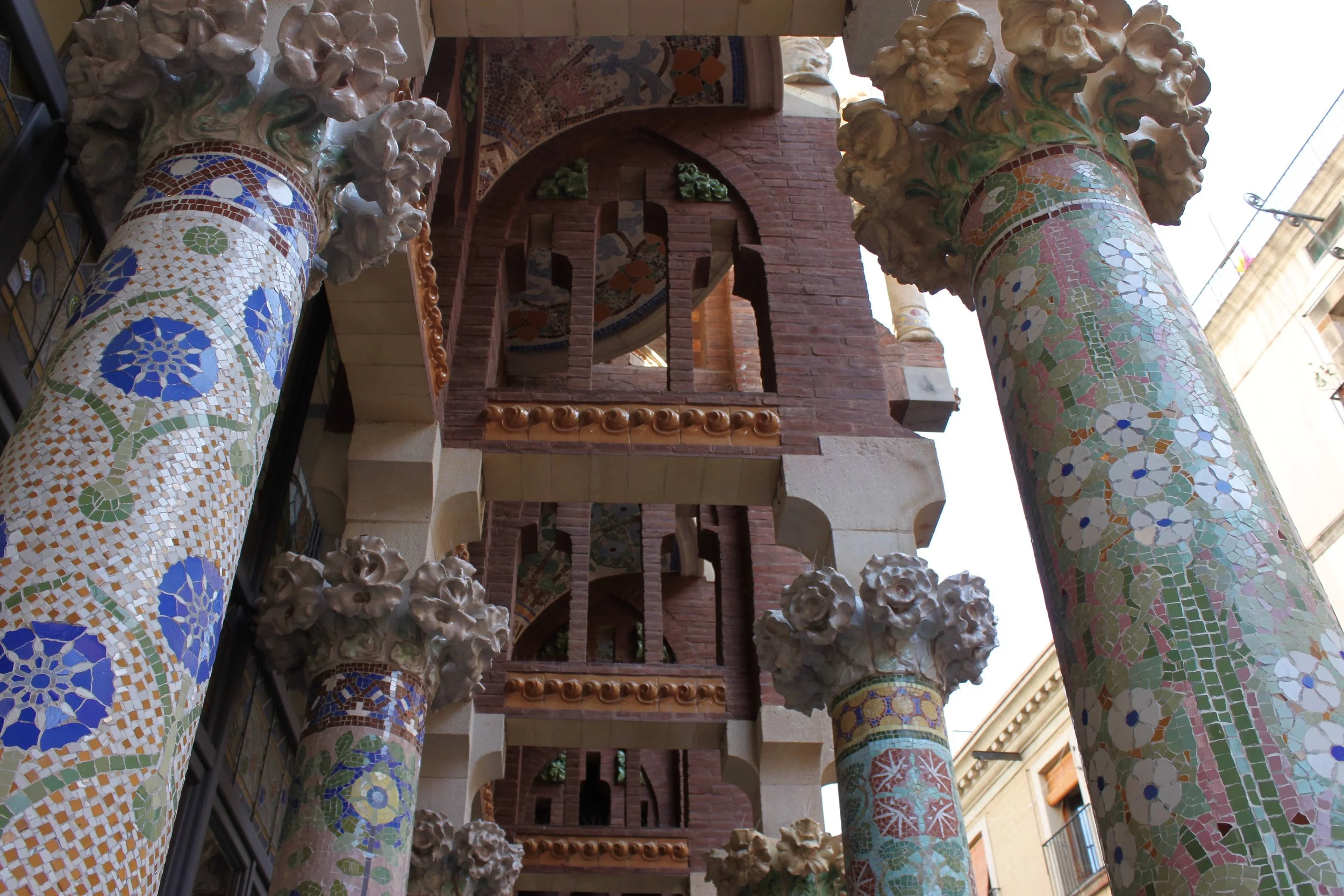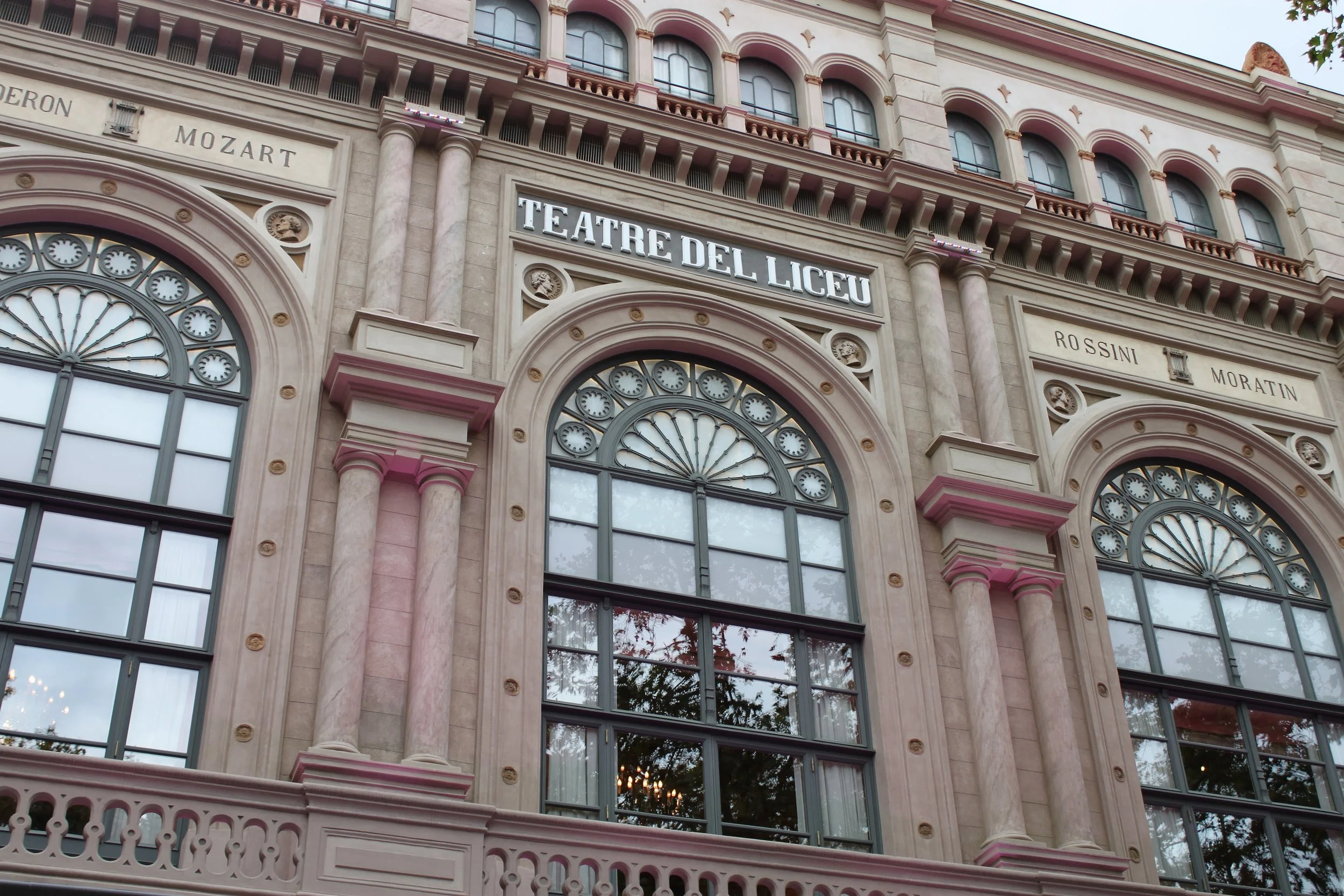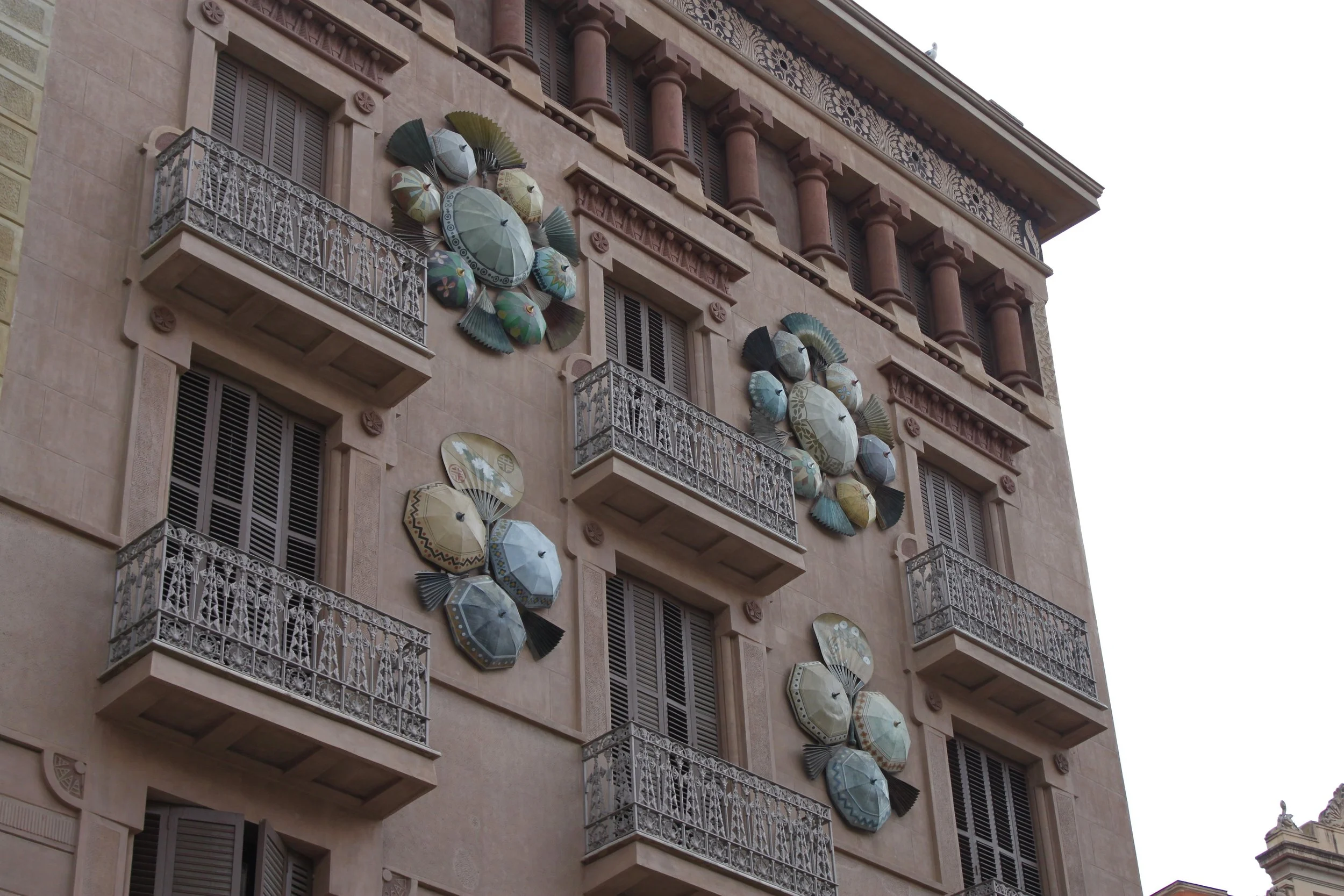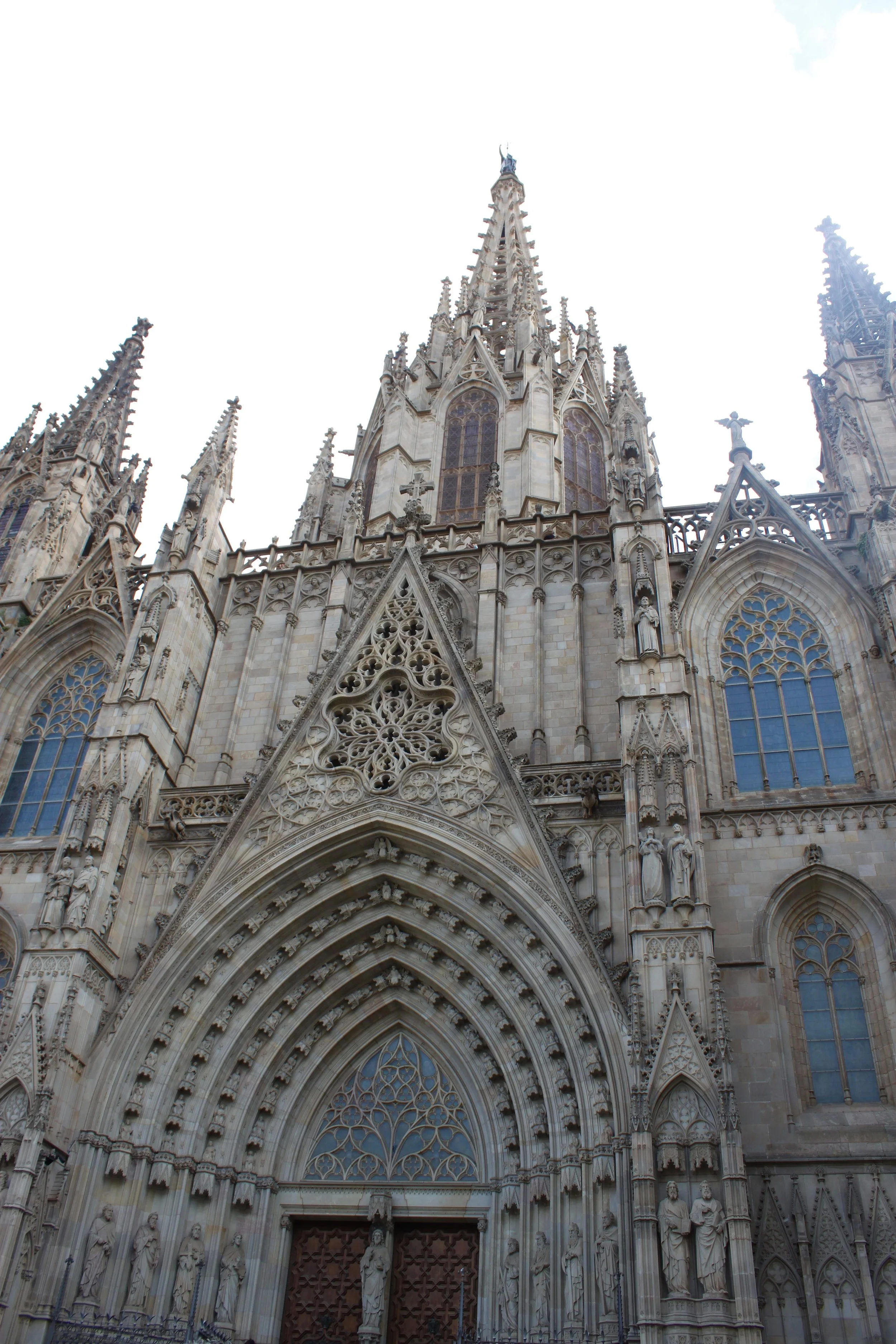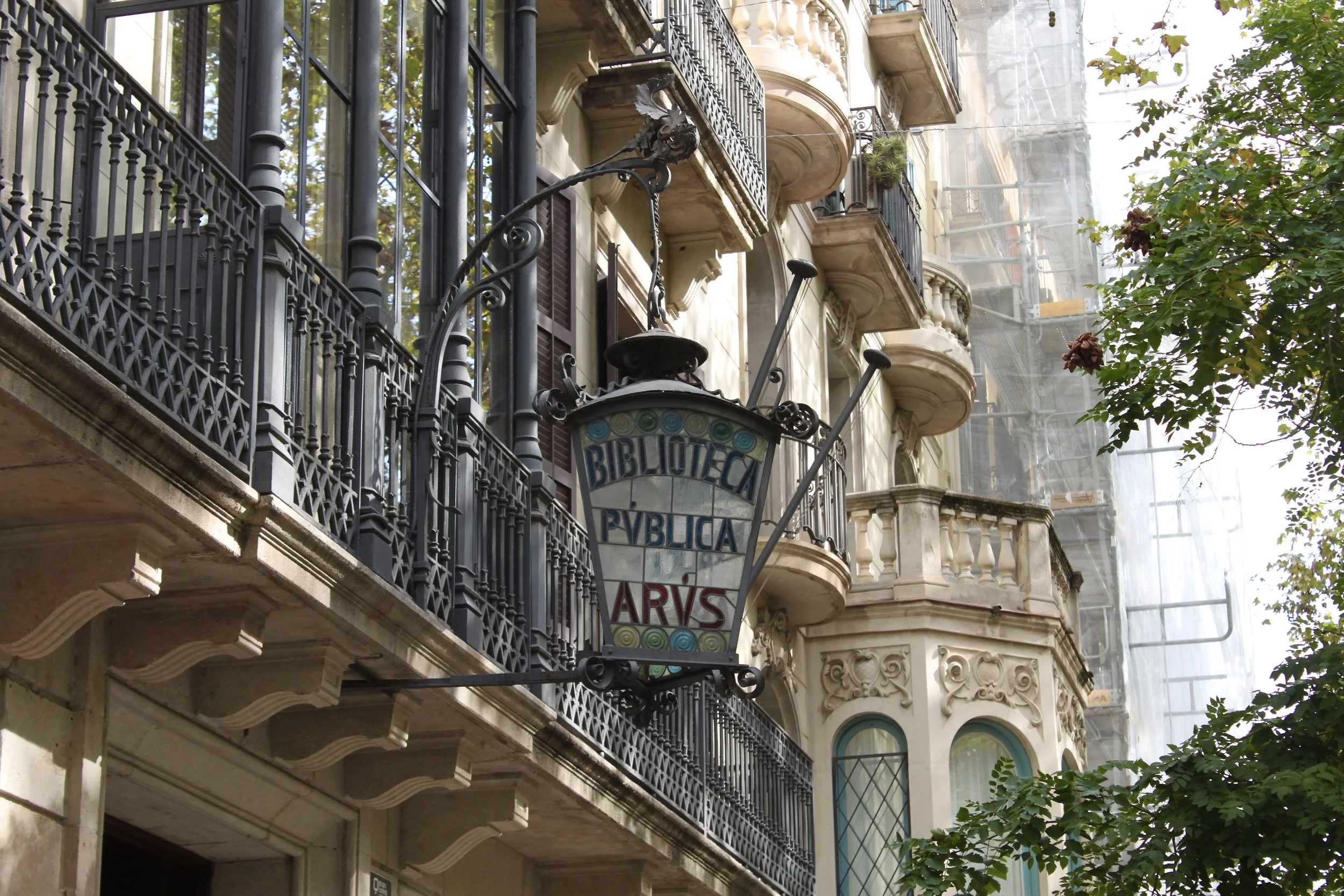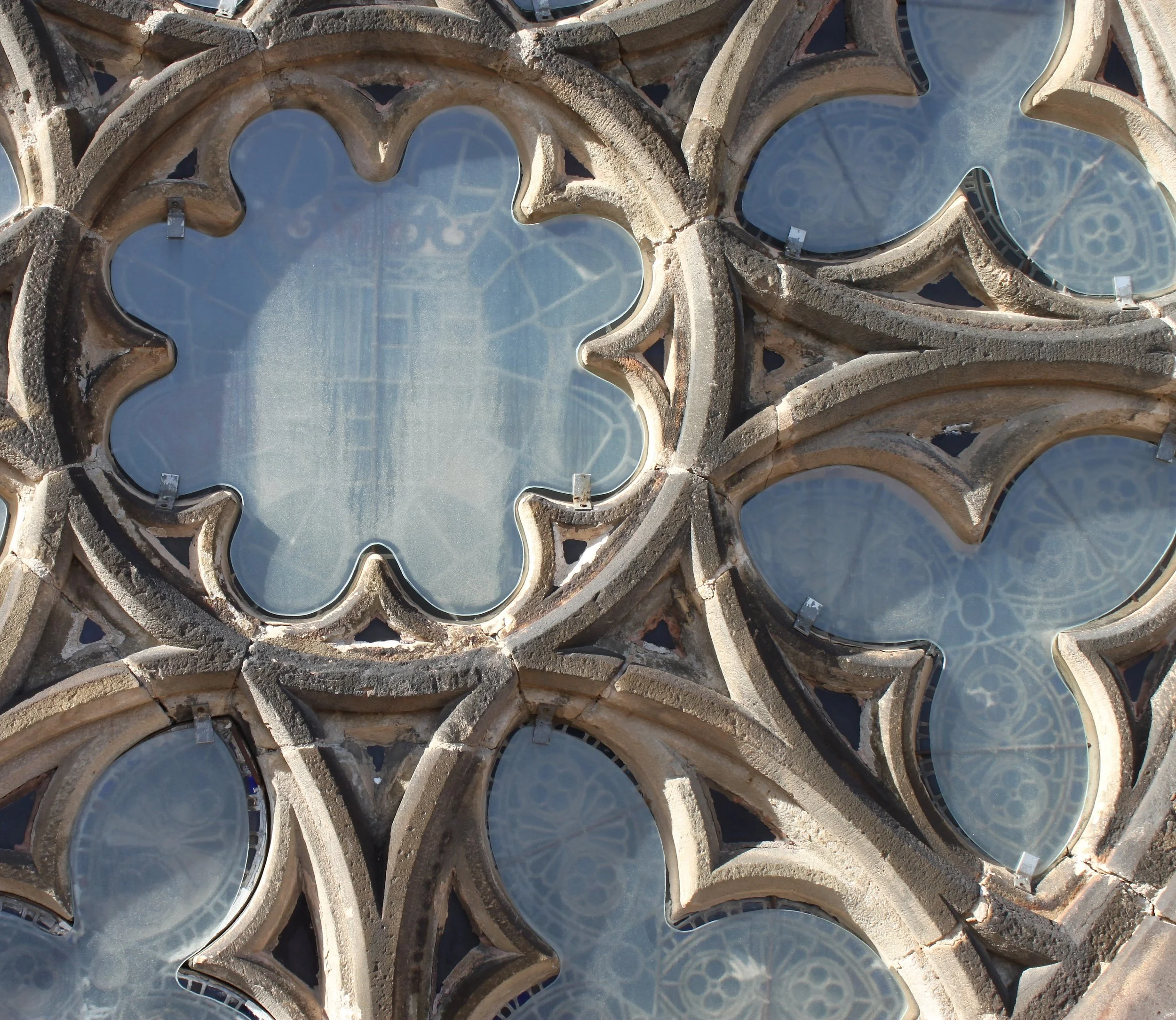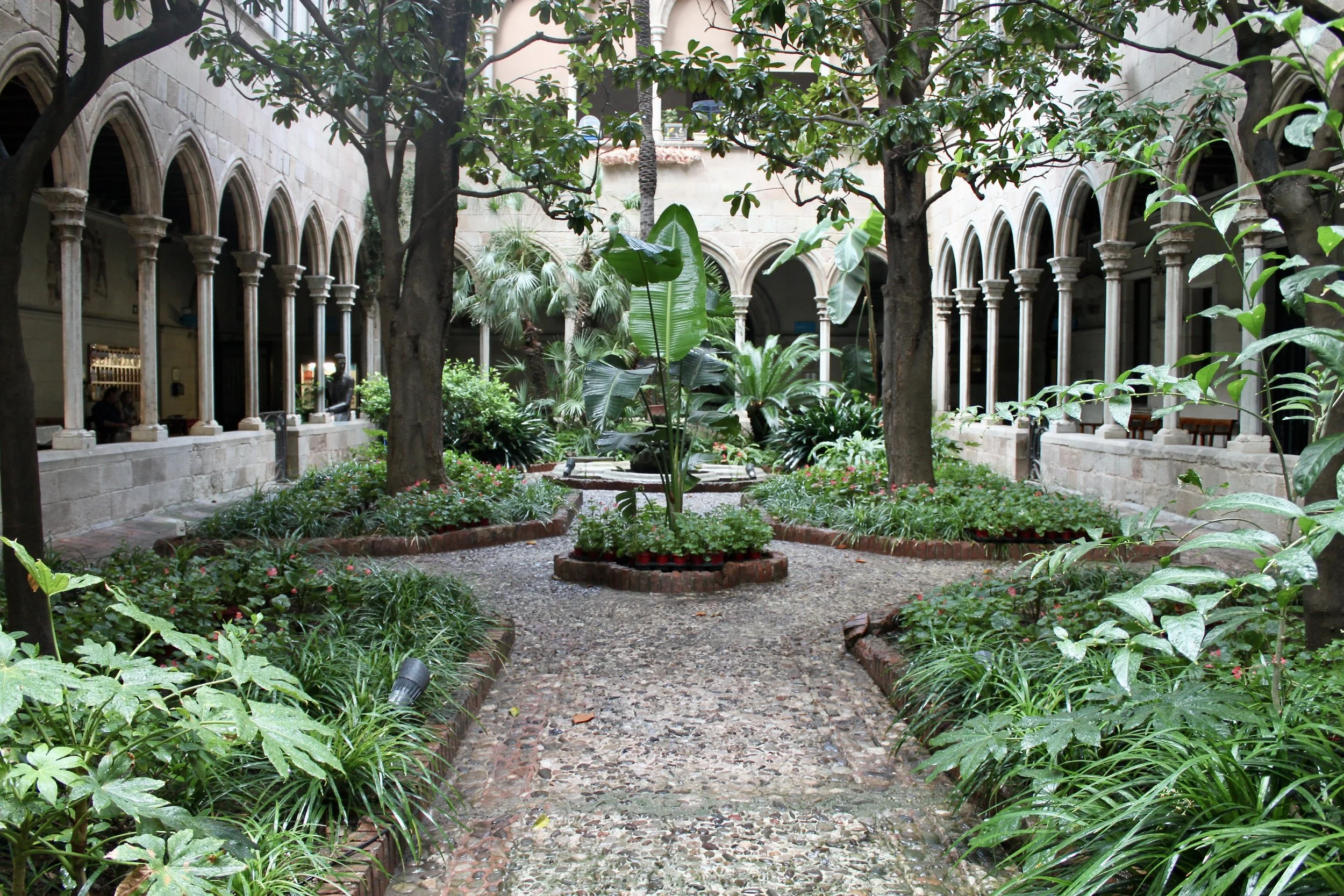BARCELONA MUST SEES
While Madrid is the capital of Spain, Barcelona is the most visited city in the country. And to make things a tad confusing, Barcelona is actually the capital of Catalonia, an autonomous community in northeastern Spain with its own culture, history, and language. If you have never been to Barcelona, here are a handful of sights you must see:
Sagrada Familia
Sagrada Familia is probably the most iconic fixture in Barcelona, designed by architect Antoni Gaudí. It is the largest unfinished (as of 2025) Catholic church in the world, with the first stone of the Sagrada Familia being placed in 1882. While Gaudí never expected to finish the project in his lifetime, his untimely death – in addition to funding problems and events like the Spanish Civil War and COVID-19 – resulted in major delays. The main structure is scheduled for completion in 2026 (the 100th anniversary of Gaudí’s death), but we will probably continue to see construction cranes and workers for years to come! As this is THE most popular attraction in Barcelona, you must purchase tickets in advance. Please note that admission to the church does not include entrance to one of the towers, and you will need to specifically purchase tickets for that access.
Park Güell
Another wildly popular spot in Barcelona is Park Güell, also designed by Antoni Gaudí. This park is situated on the southern slope of the Turó del Carmel hill, which is part of the Collserola mountain range. This means to get to Park Güell, it is a bit of a steep trek if you are coming from the city centre! To avoid disappointment, purchase your tickets in advance and nab the first timeslot. Entrance to Park Güell is limited to a certain number of visitors each hour, and people will come out in droves! Once you are able to enter, make your way to Park Güell’s panoramic terrace and move towards the Serpentine Bench. As this is the most popular part of the park, you want to check this off first. Here you will be rewarded with not only beautiful views of the city, but parts of the park as well. Another popular landmark of the park is El Drac, a colorful mosaic lizard! Be sure to also allot plenty of time to discover the Hypostyle Room, the Porter’s Lodge Pavilions, and the Viaducts.
Casa Milà (La Pedrera)
Casa Milà, also known as La Pedrera, is one of the most iconic buildings in Barcelona and a stunning example of Catalan Modernism, a distinct Art Nouveau architectural style. Casa Milà was designed by architect Antoni Gaudí (sensing a theme?), and built between 1906 and 1912 on Passeig de Gràcia. It was the last private residence designed by the architect, who then went on to focus his efforts on the making of Sagrada Familia. No longer a home, Casa Milà welcomes visitors from all over the world. Don’t miss the Butterfly Courtyard and the rooftop of La Pedrera! Specifically, on the roof you can get up close and personal with some of Gaudí’s sculptural creations.
Casa Batlló
Casa Batlló is another Gaudí masterpiece on Passeig de Gràcia. This building actually has my favorite Catalan Modernist façade, as I absolutely love the sea glass greens, blues, and purples that adorn the front of the building. The interior of Casa Batlló is just as dreamy, with a large window on the main floor that offers a view over Passeig de Gràcia, a lightwell with various shades of blue tiles, and little details such as the doorknobs and handrails. Gaudí doesn’t miss an opportunity to transform every element, and that includes the roof. You can even enjoy a drink on the rooftop, depending on when you visit! I would suggest purchasing tickets in advance to enter Casa Batlló. Even if you select the first timeslot, you will be waiting in a little line with the rest of the people who chose the same time as you.
Passeig de Gràcia
As mentioned above, both Casa Milà and Casa Batlló can be found on Passeig de Gràcia, a major avenue in Barcelona. However, Gaudì isn’t the only Modernist whose work is on display. Keep your eyes peeled for the 32 lampposts that line Passeig de Gràcia, designed by Modernist architect Pere Falqués i Urpí. These lampposts were built in 1906 and all feature a little bench structure at their base. Not only can you find these stunning examples of Modernist architecture, but the boulevard is also renowned for its luxury shopping and vibrant atmosphere. Additionally, Passeig de Gracia connects Plaça Catalunya to the Gràcia district, so taking this path is a great way to get to our next must-see!
Plaça de Catalunya
Plaça de Catalunya is a square considered to be the city centre, bridging the old city and the Eixample district, which was built in the 19th century. No need to spend too much time here, but it is a nice place to walk through!
Ciutadella Park
A place where you should absolutely spend time is Ciutadella Park. While Barcelona is surrounded by mountains and beaches, Ciutadella Park is a green respite within the city. You can enjoy a picnic, go for a long walk, or people watch as you sit on one of the many benches that are interspersed throughout the park. You can also head to the zoo or the Museum of Modern Art, which is situated within the Catalan Parliament building.
Arc de Triomf & the Passeig de Lluís Companys
The Arc de Triomf is an impressive brick arch, originally constructed in 1888 as the main access gate for the Barcelona World Fair by architect Josep Vilaseca i Casanovas. Once you pass through the arch, you will walk the central promenade of the Passeig de Lluís Companys, which leads you to Ciutadella Park, the fabulous park mentioned above!
Palau de la Música Catalana
The Palace of Catalan Music is a concert hall that is a colorful example of Catalan Modernism. At this point, you might think Gaudí was the architect behind this landmark, but it was actually his professor, Lluís Domènech i Montaner, who designed the palau! Originally devised as the home for a choir, this World Heritage Site now hosts symphonic concerts, operas, jazz performances, tribute concerts, and more. If you do not have time to see a performance at the Palace of Catalan Music, consider taking a guided tour, where you will be able to visit the concert auditorium (and see the famous central skylight), the rehearsal hall, and the Lluís Millet Hall. I particularly loved the latter, which boasts tall stained-glass windows and a balcony decorated with vibrant mosaic columns.
Gran Teatre del Liceu
Another performance venue is the Gran Teatre del Liceu, which hosts opera, ballet, and symphonic music productions. Originally built in 1847, it was destroyed in a 1994 fire and reopened in 1999. The Gran Teatre del Liceu is a neoclassical building, with a Renaissance-style lobby. If you do not have time to pop in for a performance, you will certainly pass by the theatre during your Barcelona travels, as it is located on La Rambla.
La Rambla
La Rambla is a famous pedestrian street, known for its lively atmosphere, street performers, and shops. You can pretty much find every tourist on this street, which also means you can find a lot of pick pocketers. Please keep your belongings zipped up and close to you as you navigate this street!
Gothic Quarter
La Rambla separates the El Ravel district from the Gothic Quarter, the oldest part of Barcelona. Here you will find a maze of narrow streets (I got turned around quite a few times), Roman city walls, and lively squares. I particularly love the Pont del Bisbe, a Neo-Gothic marble crossing between two buildings. I also really enjoy the Cathedral of Barcelona, which stands tall in the Gothic Quarter.
Cathedral of Barcelona
While the Cathedral of Barcelona is not as popular with tourists as Sagrada Familia, this Gothic Catholic church still draws a crowd. The Cathedral’s choir is quite special, and is a lovely example of Catalan Gothic style. Do not miss the Cloister of the cathedral, which was constructed in the Gothic style in the 14th and 15th centuries. In the center of the Cloister, you will find a garden with palm trees, magnolias, and a fountain. You will also find that this area of the cathedral is home to some white geese! Lastly, you can experience the cathedral from the roof by taking an elevator up to see the two bell towers.
Picasso Museum
This museum is another site that can be found in the Gothic Quarter. It is rather small, but packs a punch, as it houses paintings, drawings, and ceramics by the famous Pablo Picasso. The artist and his family moved to Barcelona in 1895 when he was a teenager, and he would stay in Barcelona until 1904. While Pablo started to receive training from his father at a young age, it was in Barcelona at age 13 when he was admitted to the School of Fine Arts, that he started to display advanced artistic abilities. Even though Picasso spent most of his life in France, he always had a tie to Spain, and in 1963 the Picasso Museum opened. One of my favorite pieces of his, Owl with Chair, is on display at the Picasso Museum.
Biblioteca Pública Arús
Biblioteca Pública Arús is a public library that was opened by Rossend Arús in 1895. At first, the collection consisted of 24,000 volumes and now houses an impressive collection of over 75,000 volumes. While the library has grown in works, it is generally aimed at researches and university students, as it is now a research centre specializing in contemporary social movements. Even if you are not planning on writing a university paper, it is a lovely small library to visit!
Basilica de Santa Maria del Mar
Basilica de Santa Maria del Mar was constructed in the Gothic style between 1329 to 1384 in Barcelona’s Born district. It is a beautiful church to visit as a tourist, but it is also a coveted wedding location! I myself witnessed a sweet baptism when I was there. Similarly to the Cathedral of Barcelona, you have the option of accessing the roof as well as the interior of the church. However, you will have to walk up! The views are definitely worth it.
Basílica de la Puríssima Concepció
The Basilica of the Immaculate Conception and Assumption of Our Lady is located in the Eixample district of Barcelona. You wouldn’t expect a medieval church in this area, considering much of this neighborhood was constructed in the late 19th and early 20th centuries. However, this basilica was originally located in the old centre of the city, and was transferred stone by stone to its current location between 1871 and 1888. The church is not overrun with tourists, and is a nice quite spot amongst the bustle of the city. There is even a cloister with a peaceful garden and fountain you can enjoy.
Muñoz Ramonet Gardens
Another spot that is pretty hidden from tourists is the Muñoz Ramonet Gardens. I wouldn’t choose to visit these gardens over the touristy heavy hitters like Sagrada Familia or Park Güell, but if you have time or you are in the area and want to sit for a bit, I really like these gardens. There are different plant species growing in the garden, and even some avocados and citrus. Because the garden is enclosed by walls, the street noise fades away and you can hear the birds who have made Muñoz Ramonet Gardens their home!
Honorable mentions are Tibidabo and Montjuïc Castle, but please note that these landmarks are both not walkable from the city centre.

